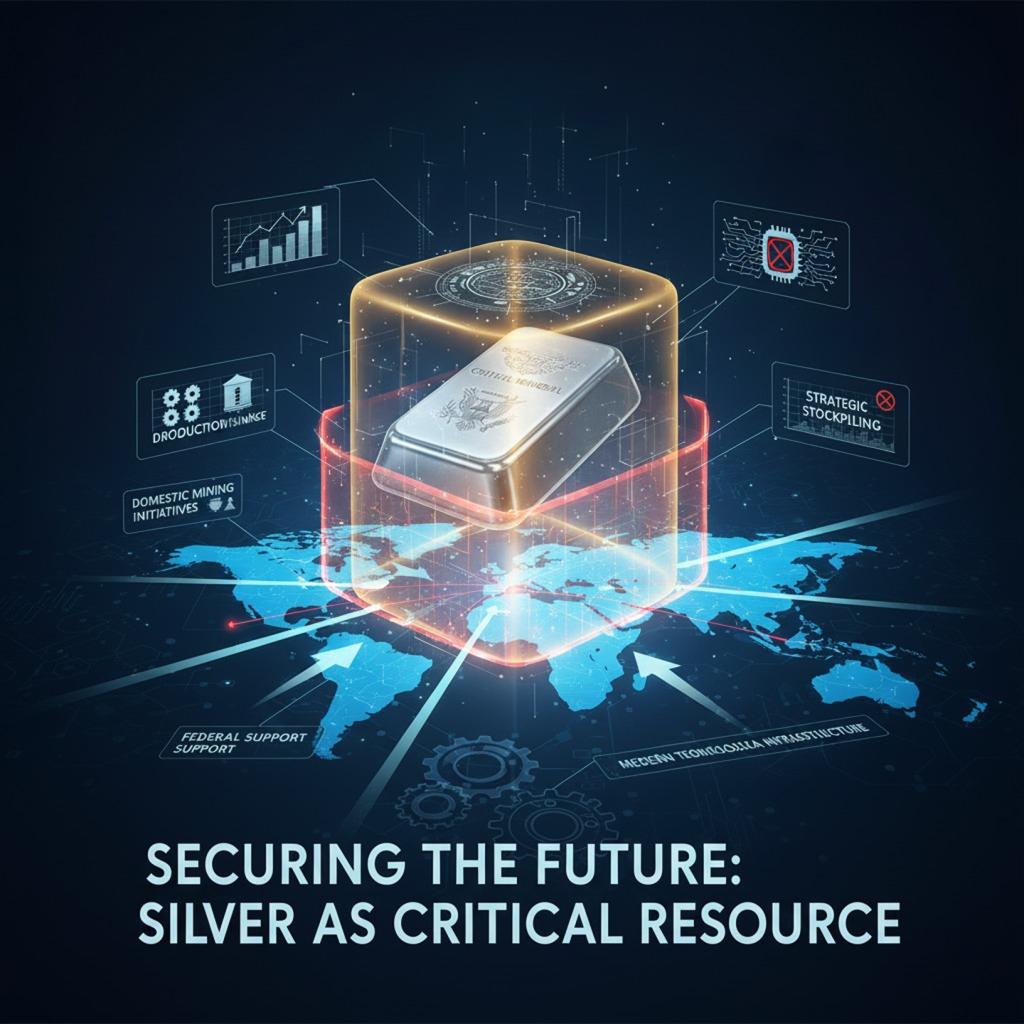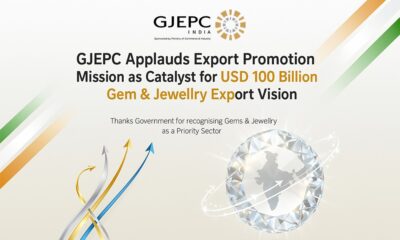JB Insights
US designates silver as “critical mineral”, adds new layer of appeal to the white metal

The US Department of the Interior’s recent designation of silver as a “critical mineral” is more than a bureaucratic update; it signals a fundamental paradigm shift in how the white metal is valued, managed, and traded within the global economy. This strategic move, which places silver alongside copper and metallurgical coal, marks a decisive turn towards resource nationalism and industrial policy aimed at securing domestic supply chains. For global businesses and investors, this development fundamentally alters the risk-reward calculus for silver, transitioning it from a traditional store of value and jewellery material to a strategically critical industrial input.

The inclusion of silver reflects the evolution of the critical minerals doctrine, which has broadened its definition to emphasize the need for securing key resources domestically. By joining this exclusive category, silver will now directly influence federal review processes, including Section 232 tariff regulations, and guide federal support for domestic mining initiatives. This policy maneuver is a direct response to the US’s reliance on imports, which currently account for about two-thirds of its silver supply. The inherent danger of such a supply vulnerability—especially for a mineral essential to modern technological infrastructure—has spurred action, leading to anticipatory stockpiling and, in some cases, temporary shortages in global hubs like London. The core message is clear: US industrial policy will increasingly prioritize security over unfettered global supply, a stance that inherently restricts market flow.

Silver’s criticality is reinforced by its ubiquitous and irreplaceable applications in high-growth sectors, particularly electronics, solar panels, and electric vehicles (EVs). This robust, structural industrial demand distinguishes it from purely monetary metals. if silver is now viewed as a strategic metal with higher industrial demand, “supply constraints and strategic issues may support higher long-term prices.” The immediate consequence of the US policy will be a potential constraint on global supply. By incentivizing domestic mining and securing supply chains through policy measures, the US action effectively limits global availability, creating upward pressure on international pricing trends.

For investors, this structural shift adds a compelling new layer of appeal to the metal. Silver’s value proposition is no longer solely dependent on inflation hedging or discretionary jewellery demand; it is now underpinned by a geopolitical-industrial tailwind. As supply tightens and industrial demand accelerates—especially in large importing nations like India, where renewable energy and EV adoption are surging—the cost of imports is projected to rise. This confluence of global supply restriction and domestic demand growth creates a “double benefit” for local investors, validating silver’s investment case beyond typical cyclical considerations. The structural layer of appeal introduced by its critical mineral status thus transforms silver into a key asset for investors seeking exposure to both resource nationalism and the global energy transition.
In conclusion, the US designation of silver as a critical mineral is a watershed moment, signaling the metal’s transition into an essential component of national security and industrial future. This strategic policy intervention is a direct challenge to the previously free-flowing global supply chain, promising tighter market controls, incentivized domestic production, and higher long-term prices. For business leaders and investors, the imperative is to adapt to this new environment where geopolitics and industrial policy decisively intersect with commodity markets, recognizing silver not merely as a precious metal, but as a strategically vital input whose valuation is entering a new, structurally bullish phase.
Education
The Science Behind Sparkle: How Lab-Grown Diamonds Are Created
A New Era of Diamond Creation

In recent years, lab-grown diamonds have captured the attention of jewellers, consumers, and investors alike. Beyond their beauty, what makes these gems truly fascinating is the science behind their creation. Unlike imitation stones, lab-grown diamonds share the same physical, chemical, and optical properties as natural diamonds — the only difference lies in their origin.
At the heart of this innovation are two cutting-edge processes: High Pressure High Temperature (HPHT) and Chemical Vapor Deposition (CVD). These methods recreate the intense conditions under which natural diamonds form deep within the Earth, allowing scientists to produce genuine diamonds in a controlled laboratory environment.
HPHT: Diamonds Born Under Extreme Conditions

The High Pressure High Temperature (HPHT) method mimics the natural diamond-forming process that occurs about 150 kilometers below the Earth’s surface.
- Starting Point – The Seed:
A small diamond seed, usually a thin slice of an existing diamond, is placed inside a carbon-rich chamber. - Simulating Nature – Pressure and Heat:
The seed is exposed to extreme conditions — pressures of about 5–6 GPa (equivalent to the pressure at the Earth’s mantle) and temperatures of 1,400–1,600°C. - Crystal Growth:
Under these conditions, the carbon source melts and crystallizes around the diamond seed, forming a larger crystal over several weeks.
The result is a high-quality diamond crystal that is virtually indistinguishable from its natural counterpart. HPHT diamonds often exhibit exceptional clarity and can be produced in a range of sizes and colors, including colorless, yellow, and blue varieties.
CVD: Diamonds Grown in a Plasma Cloud

The Chemical Vapor Deposition (CVD) process is a more recent innovation that uses advanced plasma technology to grow diamonds atom by atom.
- Preparing the Chamber:
A thin diamond seed is placed inside a vacuum chamber filled with carbon-rich gases, typically methane and hydrogen. - Creating Plasma:
The gases are energized using microwaves or lasers, forming a plasma cloud that breaks down the molecular bonds of the gases. - Diamond Formation:
Carbon atoms released from the plasma settle onto the seed layer, crystallizing into pure diamond over the course of several weeks.
The CVD method allows for greater control over purity, color, and size, making it ideal for high-end jewellery applications. It also produces diamonds that are free from many of the inclusions typically found in natural stones.
Technology Meets Sustainability

Both HPHT and CVD processes are transforming the jewellery industry not only through technology but also through sustainability. Lab-grown diamonds require no mining, dramatically reducing environmental impact. Many manufacturers are also transitioning to renewable energy sources to power their production facilities, making these diamonds even more eco-conscious.
Furthermore, traceability is a defining advantage. Every lab-grown diamond can be tracked from its creation, offering complete transparency — a growing priority among modern consumers seeking ethical luxury.
Crafting the Future of Jewellery

As consumer awareness grows, lab-grown diamonds are redefining what it means to own something precious. With their scientific precision, sustainable creation, and stunning beauty, they represent the perfect harmony between innovation and artistry.
-

 BrandBuzz4 days ago
BrandBuzz4 days agoVBJ SINCE 1900 Fiesting Over 2000 Unique Jhumka Designs
-

 National News2 days ago
National News2 days agoIndriya unveils Rajashree, the Bridal Collection of Maharashtra
-

 BrandBuzz1 day ago
BrandBuzz1 day agoReva by P. N. Gadgil & Sons Debuts ‘The Bridal Collection’: Merging Timeless Heritage with Contemporary Diamond Splendor.
-

 National News1 day ago
National News1 day agoGJEPC Applauds Export Promotion Mission as Catalyst for USD 100 Billion Gem & Jewellery Export Vision. Thanks Government for recognising Gems & Jewellery as a Priority Sector












